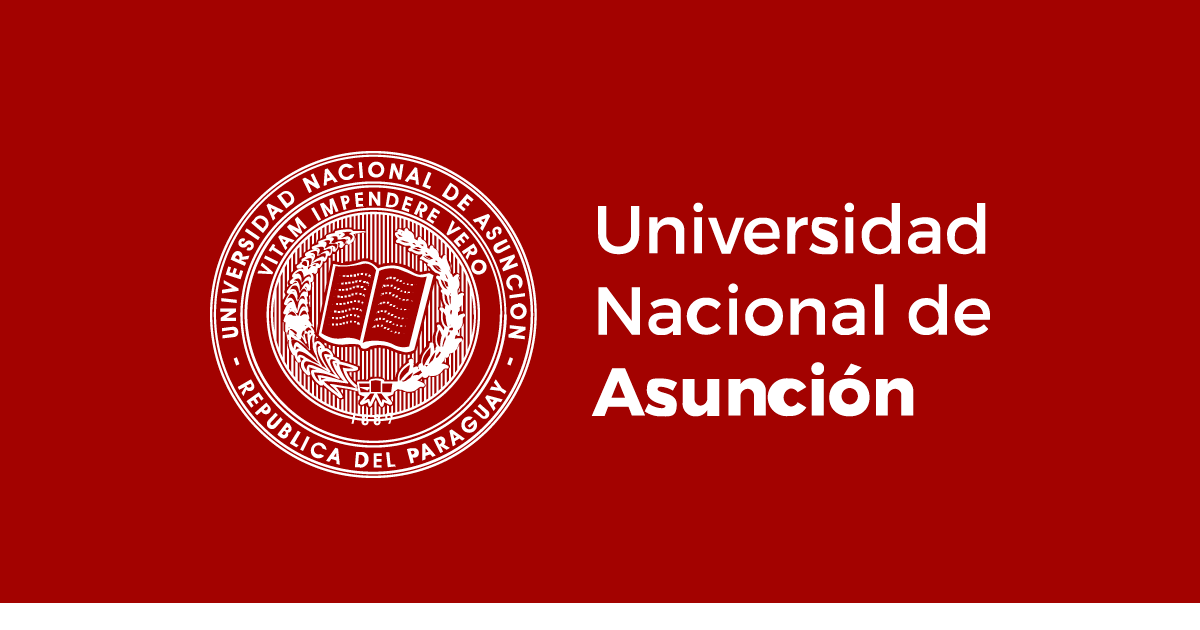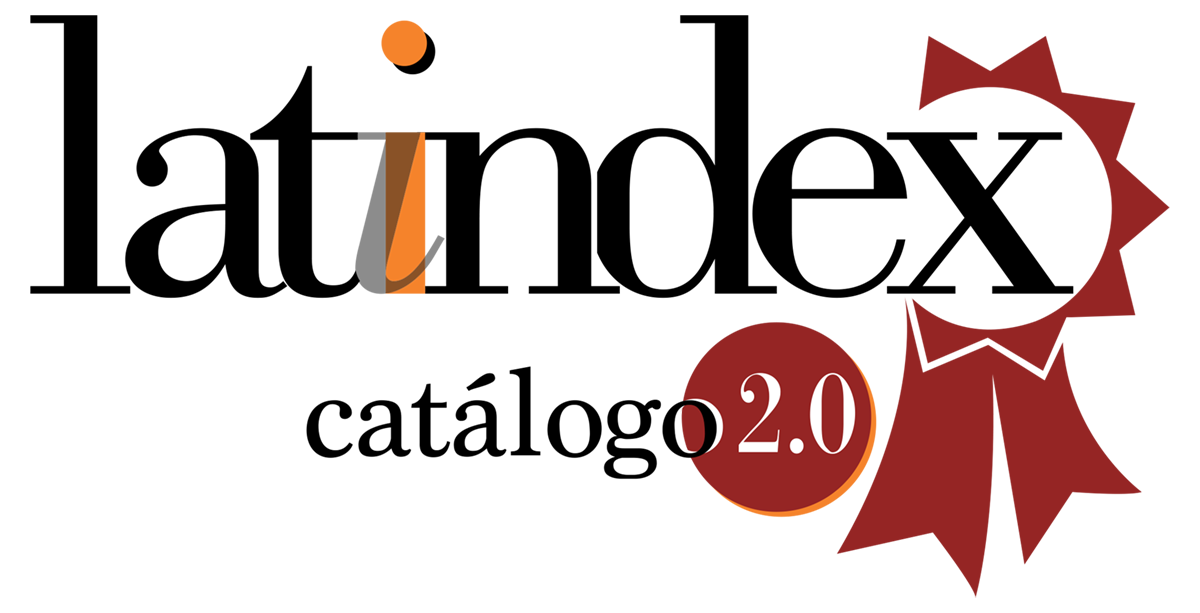La búsqueda de resistencia al tizón tardío en papas silvestres
DOI:
https://doi.org/10.47133/IEUNA2124bPalabras clave:
Phytophthora infestas, Solanum tuberosum, recursos fitogenéticosResumen
La papa (Solanum tuberosum L.) es la hortaliza más cultivada en el mundo. El principal factor limitante a nivel mundial es el tizón tardío (Phytophthora infestans), causando hasta pérdidas totales de producción. Una parte importante del mejoramiento genético de la papa se centra en la obtención de cultivares resistentes a esta enfermedad. Sin embargo, el patógeno es capaz de producir descendencias a partir de la reproducción sexual, generando nuevas cepas más virulentas, capaces de vencer la resistencia genética en nuevos cultivares. Por mucho tiempo, los genes de resistencia vertical de Solanum demissum han sido utilizados para la obtención de variedades resistentes, pero con éxito limitado debido a que son raza-específicos y porque el patógeno sobrepasa la inmunidad en poco tiempo. Actualmente existe un interés en el aprovechamiento de genes de resistencia horizontal o cuantitativa de diversas especies silvestres de Solanum, las cuales son difíciles de introducir a través de cruzamientos debido a la incompatibilidad de ploidías y al número de balance del endospermo (NBE). No obstante, algunas técnicas como la hibridación somática, la minería de alelos y el mejoramiento asistido por marcadores genéticos han permitido vencer estas barreras. De aquí la importancia de explorar e identificar nuevos genes de resistencia en las papas silvestres.
Descargas
Citas
Bethke, P. C., Halterman, D. A. & Jansky, S. (2017). Are we getting better at using wild potato species in light of new tools?. Crop Science, 57 (3), 1241-1258. https://doi.org/10.2135/cropsci2016.10.0889
Burgos, G., Zum Felde, T., Andre, C. & Kubow, S. (2020). The potato and its contribution to the human diet and health. In The potato crop, pp. 37-74. Springer, Cham. https://doi.org/10.1007/978-3-030-28683-5_2
Corredor‐Moreno, P. & Saunders, D. G. (2020). Expecting the unexpected: factors influencing the emergence of fungal and oomycete plant pathogens. New Phytologist, 225 (1), 118-125. https://doi.org/10.1111/nph.16007
Depetris, M. B., Acuña, C. A., Pozzi, F. I., Quarin, C. L. & Felitti, S. A. (2018). Identification of genes related to endosperm balance number insensitivity in Paspalum notatum. Crop Science, 58 (2), 813-822. https://doi.org/10.2135/cropsci2017.04.0260
Douches, D. S., Kirk, W. W., Bertram, M. A., Coombs, J. J. & Niemira, B. A. (2002). Foliar and tuber assessment of late blight (Phytophthora infestans (Mont.) de Bary) reaction in cultivated potato (Solanum tuberosum L.). Potato research, 45 (2-4), 215-224. https://doi.org/10.1007/BF02736116
Devaux, A., Goffart, J. P., Petsakos, A., Kromann, P., Gatto, M., Okello, J., Suarez, V. & Hareau, G. (2020). Global food security, contributions from sustainable potato agri-food systems. In The potato crop (pp. 3-35). Springer, Cham. https://doi. org/10.1007/978-3-030-28683-5_1
Enciso-Maldonado, G. A., Lozoya-Saldana, H. Colinas-Leon, M. T., Cuevas-Sanchez, J. A. Sanabria-Velázquez, A. D. Bamberg, J. & Raman, K. V. (2021). Assessment of wild Solanum species for resistance to Phytophthora infestans (Mont.) de Bary in the Toluca Valley, Mexico. [en prensa] https://doi.org/10.1007/s12230-021-09856-x
FAOSTAT. (2021). United Nations Food and Agricultural Organization. Disponible en: http://www.fao.org/faostat/en/#data (Consultado 15.08.2021).
Fernández-Pavía, S. P., Grünwald, N. J., Diaz-Valasis, M., Cadena-Hinojosa, M. & Fry, W. E. (2004). Soilborne oospores of Phytophthora infestans in central Mexico survive winter fallow and infect potato plants in the field. Plant Disease, 88 (1), 29-33. https://doi.org/10.1094/PDIS.2004.88.1.29
Flier, W. G., Grünwald, N. J., Kroon, L. P. N. M., Sturbaum, A. K., Van den Bosch, T. B., Garay-Serrano, E., Lozoya-Saldaña, H., Fry, W. F. & Turkensteen, L. J. (2003). The population structure of Phytophthora infestans from the Toluca Valley of Central Mexico suggests genetic differentiation between populations from cultivated potato and wild Solanum spp. Phytopathology, 93 (4), 382-390. https://doi.org/10.1094/PHYTO.2003.93.4.382
Foolad, M. R., Merk, H. L. & Ashrafi, H. (2008). Genetics, genomics and breeding of late blight and early blight resistance in tomato. Critical Reviews in Plant Sciences, 27(2), 75-107. https://doi.org/10.1080/07352680802147353
Forbes, G. A., Chacón, M. G., Kirk, H. G., Huarte, M. A., Van Damme, M., Distel, S., ... & Capezio, S. (2005). Stability of resistance to Phytophthora infestans in potato: an international evaluation. Plant pathology, 54 (3), 364-372. https://doi.org/10.1094/PHYTO-01-15-0005-FI
Fry, W. E., Birch, P. R. J., Judelson, H. S., Grünwald, N. J., Danies, G., Everts, K. L., Gevens, A. J. , Gugino, B. K., Johnson, D. A., Johnson, S. B., McGrath, M. T., Myers, K. L., Ristaino, J. B., Roberts, P. D., Secor, G. & Smart, C. D. (2015a). Five reasons to consider Phytophthora infestans a reemerging pathogen. Phytopathology, 105 (7), 966-981. https://doi.org/10.1111/j.1365-3059.2005.01187.x
Fry, B., Danies, G., Small, I. & Myers, K. (2015b). Recent developments concerning the population biology and control strategies of Phytophthora infestans in the USA. PPO-Special Report, 17, 45-50. https://agro.au.dk/fileadmin/euroblight/Workshops/Proceedings/Special_Report_17_Totaal_LR.pdf#page=47
Fry, W. E. & Grünwald, N. J. (2010). Introduction to oomycetes. The Plant Health Instructor. doi:10.1094/PHI-I-2012-0220-01
Fry, W. E. & Goodwin, S. B. (1997). Resurgence of the Irish potato famine fungus. Bioscience, 47 (6), 363-371. https://doi.org/10.2307/1313151
Gebhardt, C., Ballvora, A., Walkemeier, B., Oberhagemann, P. & Schüler, K. (2004). Assessing genetic potential in germplasm collections of crop plants by marker-trait association: a case study for potatoes with quantitative variation of resistance to late blight and maturity type. Molecular Breeding, 13 (1), 93-102. https://doi.org/10.1023/B:MOLB.0000012878.89855.df
Ghislain, M., Byarugaba, A. A., Magembe, E., Njoroge, A., Rivera, C., Román, M. L., Tovar, J. C., Gamboa, S., Forbes, G. A., Kreuze, J. F., Barekye, A. & Kiggundu, A. (2019). Stacking three late blight resistance genes from wild species directly into African highland potato varieties confers complete field resistance to local blight races. Plant Biotechnology Journal, 17(6), 1119-1129. https://doi.org/10.1111/pbi.13042
Schepers, H., Hausladen, H., Grønbech Hansen, J., Nielsen, B., Abuley, I., Andersson, B., Liljeroth, E., Edin, E., Bain, R., Ritchie, F., Gaucher, D., Ivanovic, Z., Blagojevic, J., Kildea, S., Filipov, A., Kuznetsova, M., Hannukkala, A., Eikemo, H., Nærstad, R.,…, Vanhaverbeke, P. (2015). Epidemics and control of early & late blight, 2013 & 2014 in Europe. In Proceedings of the fifteenth EuroBlight workshop, Brasov, Romania, 13-15 May 2015/Ed. HTAM Schepers. Applied Plant Research, Wageningen UR. https://euroblight.net//fileadmin/euroblight/Workshops/AArhus/Proceedings/Special_Report_18_Totaal.pdf
Grünwald, N. J. & Flier, W. G. (2005). The biology of Phytophthora infestans at its center of origin. Annual review of phytopathology, 43, 171-190. https://doi.org/10.1146/annurev.phyto.43.040204.135906
Halterman, D. A., Kramer, L. C., Wielgus, S. & Jiang, J. (2008). Performance of transgenic potato containing the late blight resistance gene RB. Plant disease, 92 (3), 339-343. https://doi.org/10.1094/PDIS-92-3-0339
Haverkort, A. J., Boonekamp, P. M., Hutten, R., Jacobsen, E., Lotz, L. A. P., Kessel, G. J. T., Visser, R. G. G. F. & Van der Vossen, E. A. G. (2008). Societal costs of late blight in potato and prospects of durable resistance through cisgenic modification. Potato research, 51 (1), 47-57. https://doi.org/10.1007/s11540-008-9089-y
Haverkort, A. J. & Kempenaar, C. (2016). Recent advances in biotechnology and information technology in the potato industry. In The Dundee Conference, pp. 183-190. https://library.wur.nl/WebQuery/wurpubs/fulltext/410605
Johnston, S. A., Den Nijs, T. P. M., Peloquin, S. J. & Hanneman, R. E. (1980). The significance of genic balance to endosperm development in interspecific crosses. Theoretical and applied genetics, 57 (1), 5-9. https://doi.org/10.1007/BF00276002
Karki, H. S., Jansky, S. H. & Halterman, D. A. (2021). Screening of wild potatoes identifies new sources of late blight resistance. Plant Disease, 105 (2), 368-376. https://doi.org/10.1094/PDIS-06-20-1367-RE
Kim, H. J., Lee, H. R., Jo, K. R., Mortazavian, S. M., Huigen, D. J., Evenhuis, B., Kessel, G., Visser, R. G. F., Jacobsen, E. & Vossen, J. H. (2012). Broad spectrum late blight resistance in potato differential set plants MaR8 and MaR9 is conferred by multiple stacked R genes. Theoretical and applied genetics, 124 (5), 923-935. https://doi.org/10.1007/s00122-011-1757-7
Kirk, W. W., Felcher, K. J., Douches, D. S., Niemira, B. A. & Hammerschmidt, R. (2001). Susceptibility of potato (Solanum tuberosum L.) foliage and tubers to the US8 genotype of Phytophthora infestans. American Journal of Potato Research, 78 (4), 319-322. https://doi.org/10.1007/BF02875697
Lal, M., Luthra, S. K., Singh, B. P. & Yadav, S. (2013). Screening of genotypes against potato late blight. Potato Journal, 40 (1). http://epubs.icar.org.in/ejournal/index.php/PotatoJ/article/view/31811
Leesutthiphonchai, W., Vu, A. L., Ah-Fong, A. M. & Judelson, H. S. (2018). How does Phytophthora infestans evade control efforts? Modern insight into the late blight disease. Phytopathology, 108 (8), 916-924. https://doi.org/10.1094/PHYTO-04-18-0130-IA
Lindqvist‐Kreuze, H., Gamboa, S., Izarra, M., Pérez, W., Correa, M. Y., Astete, A., Särkinen, T., Cueva, P. & Gonzáles, P. (2020). Population structure and host range of the potato late blight pathogen Phytophthora infestans in Peru spanning two decades. Plant Pathology, 69 (2), 334-346. https://doi.org/10.1111/ppa.13125
Lindqvist-Kreuze, H., Gastelo, M., Perez, W., Forbes, G. A., de Koeyer, D. & Bonierbale, M. (2014). Phenotypic stability and genome-wide association study of late blight resistance in potato genotypes adapted to the tropical highlands. Phytopathology, 104 (6), 624-633. https://doi.org/10.1094/PHYTO-10-13-0270-R
Lokossou, A. A., Park, T. H., van Arkel, G., Arens, M., Ruyter-Spira, C., Morales, J., Whisson, S. C., Birch P. R. J., Visser, R. G. F., Jacobsen, E., & van der Vossen, E. A. (2009). Exploiting knowledge of R/Avr genes to rapidly clone a new LZ-NBS-LRR family of late blight resistance genes from potato linkage group IV. Molecular plant-microbe interactions, 22 (6), 630-641. https://doi.org/10.1094/MPMI-22-6-0630
Lozoya-Saldaña, H. (2005). Importancia Internacional del Valle de Toluca, México, en estudios sobre el tizón tardío de la papa (Solatium tuberosum L.), causado por Phytophthora infestans (Mont.) de Bary. Revista Mexicana de Fitopatología, 23 (3), 312-319.
Lozoya-Saldana, H. (2011). Evolution of vertical and horizontal resistance and its application in breeding resistance to potato late blight. Potato Journal, 38 (1), 1-8. http://epubs.icar.org.in/ejournal/index.php/PotatoJ/article/view/32385
Mabon, R., Guibert, M., Corbière, R. & Andrivon, D. (2021). An improved PCR method for rapid and accurate identification of mating types in the late blight pathogen Phytophthora infestans. Plant Health Progress, PHP-02. https://doi.org/10.1094/PHP-02-21-0026-FI
Mayton, H., Griffiths, H., Simko, I., Cheng, S., Lorenzen, J., De Jong, W. & Fry, W. E. (2010). Foliar and tuber late blight resistance in a Solanum tuberosum breeding population. Plant breeding, 129 (2), 197-201. https://doi.org/10.1111/j.1439-0523.2009.01671.x
Micheletto, S., Boland, R. & Huarte, M. (2000). Argentinian wild diploid Solanum species as sources of quantitative late blight resistance. Theoretical and Applied Genetics, 101 (5-6), 902-906. https://doi.org/10.1007/s001220051560
Pacheco-Sánchez, M., Lozoya-Saldaña, H. & Colinas-León, M. T. (2003). Reguladores de crecimiento y pretratamiento con frío en la androgénesis in vitro de solanum iopetalum l. Agrociencia, 37 (3), 257-265. https://www.redalyc.org/pdf/302/30237305.pdf
Park, T. H., Vleeshouwers, V. G., Kim, J. B., Hutten, R. C. & Visser, R. G. (2005). Dissection of foliage and tuber late blight resistance in mapping populations of potato. Euphytica, 143 (1), 75-83. https://doi.org/10.1007/s10681-005-2658-0
Pérez, W., Salas, A., Raymundo, R., Huaman, Z., Nelson, R. & Bonierbale, M. (2000). Evaluation of wild potato species for resistance to late blight. Scientist and Farmer, Partners in Research for the 21st Century, Program Report 1999–2000, 49-62. https://citeseerx.ist.psu.edu/viewdoc/download?doi=10.1.1.527.6319&rep=rep1&type=pdf
Qi, J., Asano, T., Jinno, M., Matsui, K., Atsumi, K., Sakagami, Y., & Ojika, M. (2005). Characterization of a Phytophthora mating hormone. Science, 309 (5742), 1828-1828. DOI: 10.1126/science.1114756
Santa, J. D., Berdugo-Cely, J., Cely-Pardo, L., Soto-Suárez, M., Mosquera, T. & Galeano M, C. H. (2018). QTL analysis reveals quantitative resistant loci for Phytophthora infestans and Tecia solanivora in tetraploid potato (Solanum tuberosum L.). Plos one, 13 (7), e0199716. https://doi.org/10.1371/journal.pone.0199716
Shakya, S. K., Larsen, M. M., Cuenca-Condoy, M. M., Lozoya-Saldaña, H. & Grünwald, N. J. (2018). Variation in genetic diversity of Phytophthora infestans populations in Mexico from the center of origin outwards. Plant disease, 102 (8), 1534-1540. https://doi.org/10.1094/PDIS-11-17-1801-RE
Sieber, K., Forster, G. M., Berger, A., Hammann, T., Kellermann, A. & Schwarzfischer, A. (2015). Assessment of genetic hotspots for Phytophthora resistance and their use as molecular markers in potato breeding. PPO-Special Report no. 17, 57. https://euroblight.net/fileadmin/euroblight/Publications/Special_Report_17_Totaal_LR.pdf#page=59
Sokolova, E., Pankin, A., Beketova, M., Kuznetsova, M., Spiglazova, S., Rogozina, E. & Khavkin, E. (2011). SCAR markers of the R-genes and germplasm of wild Solanum species for breeding late blight-resistant potato cultivars. Plant Genetic Resources, 9 (2), 309. https://doi.org/10.1017/S1479262111000347
Song, J., Bradeen, J. M., Naess, S. K., Raasch, J. A., Wielgus, S. M., Haberlach, G. T., Liu, J., Kuang, H., Austin-Phillips, S., Buell, C. R., Helgeson, J. P. & Jiang, J. (2003). Gene RB cloned from Solanum bulbocastanum confers broad spectrum resistance to potato late blight. Proceedings of the national academy of sciences, 100 (16), 9128-9133. https://doi.org/10.1073/pnas.1533501100
Spooner, D. M., Jansky, S., Rodríguez, F., Simon, R., Ames, M., Fajardo, D. & Castillo, R. O. (2019). Taxonomy of wild potatoes in northern South America (Solanum section Petota). Systematic Botany Monographs, 108, 1-305. https://doi.org/10.2307/25027915
Stokstad E. (2019). The new potato. Science, 363 (6427), 574-577
Tiwari, J. K., Siddappa, S., Singh, B. P., Kaushik, S. K., Chakrabarti, S. K., Bhardwaj, V. & Chandel, P. (2013). Molecular markers for late blight resistance breeding of potato: an update. Plant Breeding, 132 (3), 237-245. https://doi.org/10.1111/pbr.12053
Tiwari, J. K., Devi, S., Sharma, S., Chandel, P., Rawat, S. & Singh, B. P. (2015). Allele mining in Solanum germplasm: cloning and characterization of RB-homologous gene fragments from late blight resistant wild potato species. Plant molecular biology reporter, 33 (5), 1584-1598. https://doi.org/10.1007/s11105-015-0859-9
Turner, R. S. (2005). After the famine: Plant pathology, Phytophthora infestans, and the late blight of potatoes, 1845-1960. Historical Studies in the Physical and Biological Sciences, 35 (2), 341-370. https://doi.org/10.1525/hsps.2005.35.2.341
USDA. (2021). Red de información sobre recursos de germoplasma (GRIN). Servicio de Investigaciones Agropecuarias. Departamento de Agricultura de EE.EE. https://www.ars-grin.gov/
Vleeshouwers, V. G., Raffaele, S., Vossen, J. H., Champouret, N., Oliva, R., Segretin, M. E., Rietman, H., Cano, L. M., Lokossou, A., Kessel, G., Pel, M. A. & Kamoun, S. (2011). Understanding and exploiting late blight resistance in the age of effectors. Annual review of phytopathology, 49, 507-531. https://doi.org/10.1146/annurev-phyto-072910-095326
Van Der Vossen, E., Sikkema, A., Hekkert, B. T. L., Gros, J., Stevens, P., Muskens, M., Wouters, D., Pereira, A., Stiekema, W. & Allefs, S. (2003). An ancient R gene from the wild potato species Solanum bulbocastanum confers broad‐spectrum resistance to Phytophthora infestans in cultivated potato and tomato. The plant journal, 36 (6), 867-882. https://doi.org/10.1046/j.1365-313X.2003.01934.x
Vossen, J. H., van Arkel, G., Bergervoet, M., Jo, K. R., Jacobsen, E., & Visser, R. G. (2016). The Solanum demissum R8 late blight resistance gene is an Sw-5 homologue that has been deployed worldwide in late blight resistant varieties. Theoretical and Applied Genetics, 129(9), 1785-1796. https://doi.org/10.1007/s00122-016-2740-0
Wang, J., Fernández-Pavía, S. P., Larsen, M. M., Garay-Serrano, E., Gregorio Cipriano, R., Rodríguez-Alvarado, G., Grünwald, N. J. & Goss, E. M. (2017). High levels of diversity and population structure in the potato late blight pathogen at the Mexico centre of origin. Molecular Ecology, 26, 1091–1107. https://doi.org/10.1111/mec.14000
Zoteyeva, N., Chrzanowska, M., Flis, B. & Zimnoch-Guzowska, E. (2012). Resistance to pathogens of the potato accessions from the collection of NI Vavilov Institute of Plant Industry (VIR). American journal of potato research, 89 (4), 277-293. https://doi.org/10.1007/s12230-012-9252-5
Zoteyeva, N. M. (2020). Late blight resistance of wild potato species under field conditions in the Northwest of Russia. Proceedings on applied botany, genetics and breeding, 180 (4), 159-169. https://doi.org/10.30901/2227-8834-2019-4-159-169
Descargas
Publicado
Cómo citar
Número
Sección
Licencia
Derechos de autor 2021 Guillermo Andrés Enciso Maldonado, Héctor Lozoya Saldaña, Gabriela Díaz García, Alfredo López Salazar

Esta obra está bajo una licencia internacional Creative Commons Atribución 4.0.

















